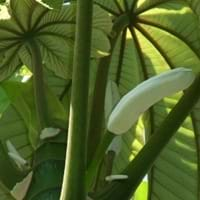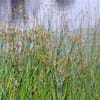Life Span
Perennial
Perennial
Origin
World/Pandemic
Caribbean, South America
Types
Not available
Not Available
Habitat
Grassland, Wet lands
Primary Rainforest, Riverbanks, subtropical regions, Tropical regions
USDA Hardiness Zone
7-11
10-15
Sunset Zone
H1, H2, 16, 17, 23, 24
H1, H2, 22, 23, 24
Habit
Spreading
Upright/Erect
Flower Color
Green, Brown
Light Yellow, Light Green, Ivory
Flower Color Modifier
Not Available
Bicolor
Fruit Color
Not Available
Ivory
Leaf Color in Spring
Green
Green
Leaf Color in Summer
Green
Green
Leaf Color in Fall
Green
Green
Leaf Color in Winter
Not Available
Green
Leaf Shape
Grass like
Circular and deeply palmately-lobed
Plant Season
Spring, Summer, Fall
Spring, Summer, Fall, Winter
Sunlight
Full Sun, Partial Sun, Partial shade
Full Sun, Partial Sun
Growth Rate
Medium
Very Fast
Type of Soil
Clay, Loam, Sand
Loam, Sand
The pH of Soil
Acidic, Neutral, Alkaline
Acidic, Neutral, Alkaline
Soil Drainage
Poorly Drained
Well drained
Bloom Time
Early Summer, Summer, Late Summer, Early Fall
Indeterminate
Tolerances
Drought
Not Available
Where to Plant?
Container, Ground, Pot
Ground
How to Plant?
Bulbs, Divison, Rhizome division, Tubers
Seedlings
Plant Maintenance
Medium
Medium
Watering Requirements
Do not let dry out between waterings, Keep ground moist, Keep the Soil well drained
Average Water Needs
In Summer
Lots of watering
Lots of watering
In Spring
Moderate
Moderate
In Winter
Average Water
Average Water
Soil pH
Acidic, Neutral, Alkaline
Acidic, Neutral, Alkaline
Soil Type
Clay, Loam, Sand
Loam, Sand
Soil Drainage Capacity
Poorly Drained
Well drained
Sun Exposure
Full Sun, Partial Sun, Partial shade
Full Sun, Partial Sun
Pruning
No pruning needed
Remove damaged leaves, Remove dead branches, Remove dead leaves
Fertilizers
can go long without fertilizers
All-Purpose Liquid Fertilizer
Pests and Diseases
Red blotch
Not Available
Plant Tolerance
Drought
Drought
Flowers
Showy
Insignificant
Flower Petal Number
Single
Not Available
Foliage Texture
Fine
Bold
Foliage Sheen
Glossy
Matte
Invasive
Sometimes
Sometimes
Attracts
Birds, Butterflies, Flying insects
Birds, Fruit Bats
Allergy
Itchiness, Skin rash
Antibacterial, Anti-inflammatory
Aesthetic Uses
Beautification, Bog Garden, Showy Purposes, Used for decorating walls, fences, gates, hedges, etc.
Not Used For Aesthetic Purpose
Beauty Benefits
Not Available
Not Available
Environmental Uses
Air purification
Air purification
Medicinal Uses
No Medicinal Use
Antidiabetic, Asthma
Part of Plant Used
Not Available
Bark, Fruits, Latex, Leaves
Other Uses
Container, Decoration Purposes, Florist trade and landscaping, Used as Ornamental plant
Used in making tea, Used in pies, cakes
Used As Indoor Plant
Yes
No
Used As Outdoor Plant
Yes
Yes
Garden Design
Bog Garden, Container, Tropical, Water Gardens
Edible, Feature Plant, Fruit / Fruit Tree, Mixed Border, Shade Trees, Tropical
Botanical Name
Cyperus papyrus
CECROPIA palmata
Common Name
Dwarf papyrus, Miniature papyrus
Snakewood Tree
In Hindi
dwarf papyrus
Snakewood Tree
In German
Zwerg Papyrus
Schlangenholz -Baum
In French
papyrus nain
Amourette Arbre
In Spanish
papiro enano
Árbol de madera de serpiente
In Greek
νάνος πάπυρο
Snakewood Tree
In Portuguese
papiro anão
Snakewood Tree
In Polish
krasnolud papirus
Snakewood Tree
In Latin
P. papyrus
Snakewood Tree
Phylum
Tracheophyta
Angiosperms
Class
Magnoliopsida
Eudicotyledoneae
Family
Cyperaceae
Urticaceae
Clade
Angiosperms, Commelinids, Monocots
Angiosperms, Eudicots, Rosids
Tribe
Not Available
Not Available
Subfamily
Not Available
Not Available
Importance of Dwarf Papyrus and Snakewood Tree
Want to have the most appropriate plant for your garden? You might want to know the importance of Dwarf Papyrus and Snakewood Tree. Basically, these two plants vary in many aspects. Compare Dwarf Papyrus and Snakewood Tree as they differ in many characteristics such as their life, care, benefits, facts, etc. Every gardener must at least have the slightest clue about the plants he wants to plant in his garden. Compare their benefits, which differ in many ways like facts and uses. The medicinal use of Dwarf Papyrus is No Medicinal Use whereas of Snakewood Tree is Antidiabetic and Asthma. Dwarf Papyrus has beauty benefits as follows: Not Available while Snakewood Tree has beauty benefits as follows: Not Available.
Compare Facts of Dwarf Papyrus vs Snakewood Tree
How to choose the best garden plant for your garden depending upon its facts? Here garden plant comparison will help you to solve this query. Compare the facts of Dwarf Papyrus vs Snakewood Tree and know which one to choose. As garden plants have benefits and other uses, allergy is also a major drawback of plants for some people. Allergic reactions of Dwarf Papyrus are Itchiness and Skin rash whereas of Snakewood Tree have Antibacterial and Anti-inflammatory respectively. Having a fruit bearing plant in your garden can be a plus point of your garden. Dwarf Papyrus has showy fruits and Snakewood Tree has showy fruits. Also Dwarf Papyrus is not flowering and Snakewood Tree is not flowering . You can compare Dwarf Papyrus and Snakewood Tree facts and facts of other plants too.





